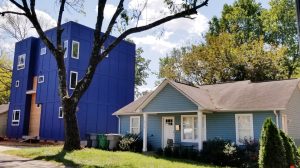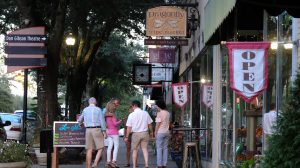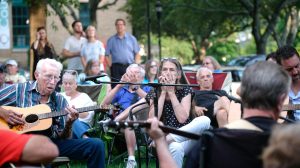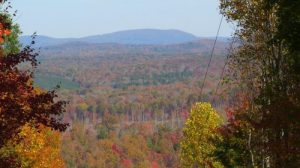Articles

This story is one of seven vignettes in the series Rural by Choice: Navigating Identity in the Uwharries. Ron and Nancy Bryant met at St. Mark’s Lutheran Church in Charlotte in the 1980s. “I was sitting in the second pew and noticed this man in the row behind me,” Nancy said. A Winston-Salem native, Ron […]

This story is one of seven vignettes in the series Rural by Choice: Navigating Identity in the Uwharries. Danny Alderman puts 1,200 to 1,400 miles on his truck each week. As the general superintendent of North Carolina projects for Branch Builds, he oversees about $250 million worth of work across the state, including schools in […]

An outdoor, living exhibit on its way to the UNC Charlotte campus will tell the story of North Carolina through plants and crops crucial to the state’s development. A team representing the University’s Center for the Study of the New South, Botanical Gardens and Urban Institute received a grant from the North Carolina Humanities Council […]

In 2018, Mecklenburg County issued over 5,000 permits for single family housing. That’s more than double the next fastest growing county: York, in South Carolina. But while Mecklenburg is still a major contributor to new housing in the region, it’s making up a smaller proportion of permits issued and now only accounts for about one […]
Nestled off a quiet street of attractive suburban homes in Waxhaw, there’s a quarter-mile trail in the woods along the Twelve Mile Creek. Near the end of a stone stairway is a striking sight: A 160-foot suspension bridge connecting Waxhaw, North Carolina, and Indian Trail, South Carolina. You can embrace the bridge’s wobbles during the […]

The South Fork of the Catawba is not the river Ted Reece remembers from his youth. Reece, 91, can still picture the South Fork backed up to form a massive pool serving the Mays and Mayflower mills’ dyeing and finishing operations. It was wide and flat enough to land a seaplane — a spectacle he […]

Earl Scruggs (1924-2012) Earl Scruggs in 2005. Photo used under Creative Commons license. He was 10 years old on the family farm in Flint Hill — about eight miles from the former county courthouse in Shelby that now bears his name — when Earl Scruggs and older brother Horace got into a “fuss.” After it […]

This is the third part in a three-part series. Read Part 1: Turning to musical heritage to fuel the future and Part 2: Looking for one ‘unique asset’ to catch up on the story. The revivalists in Shelby focused on “Uncle Earl” Scruggs and Don Gibson, approaching the county, the courthouse’s owner, about a first-rate […]

This is the second part in a three-part series. Read Part 1: Turning to musical heritage to fuel the future to catch up on the story. You can find Part 3: ‘A 38-year overnight success story’ online as well. What happened in Shelby played out across the Carolinas, where textiles were once the driver of […]
This is the first part in a three-part series. Read Part 2: ‘We needed to do something bold’ and Part 3: ‘A 38-year overnight success story’ for the next parts of the story. Thirteen years later, Brownie Plaster is still bemused by the chorus of laughs that rose one May afternoon in 2006. At the […]

Thanks to a brutal early fall heat wave, much of September felt more like July. As a result, I have not spent as much time outside as I would have liked. Last Friday, however, I was able to break away and spend the morning at Morrow Mountain State Park. A friend and myself hiked the […]

Can philanthropy foster greater regional connection? Yes, according to our research for the Carolinas Urban-Rural Connection project. But it’s not just the movement of money that matters, say local leaders: it’s the regional exchange of ideas about how to put that money to work that seems to make a difference. Community foundations, by definition, have […]